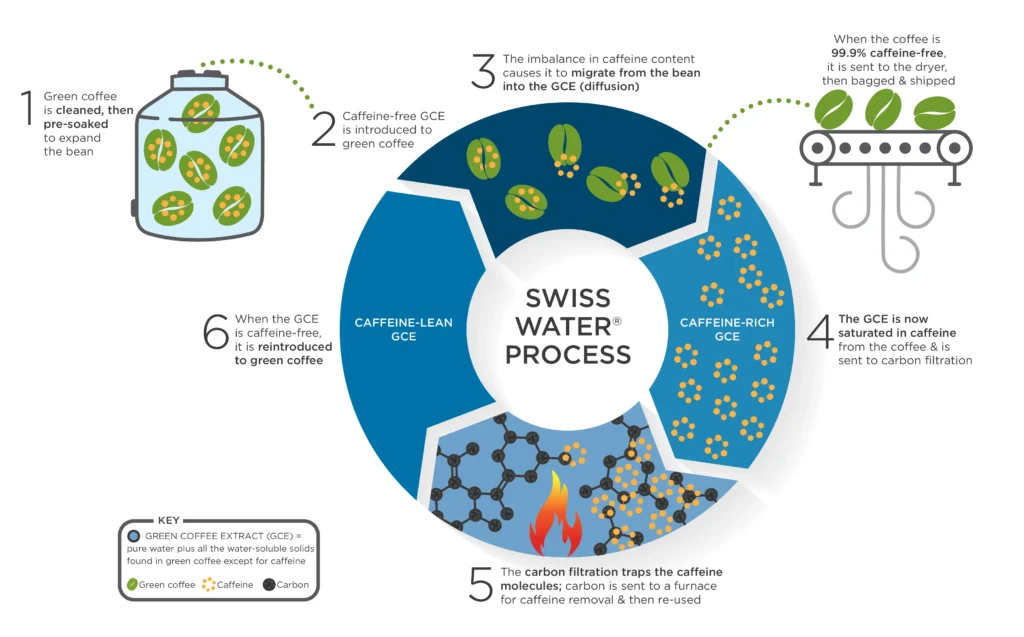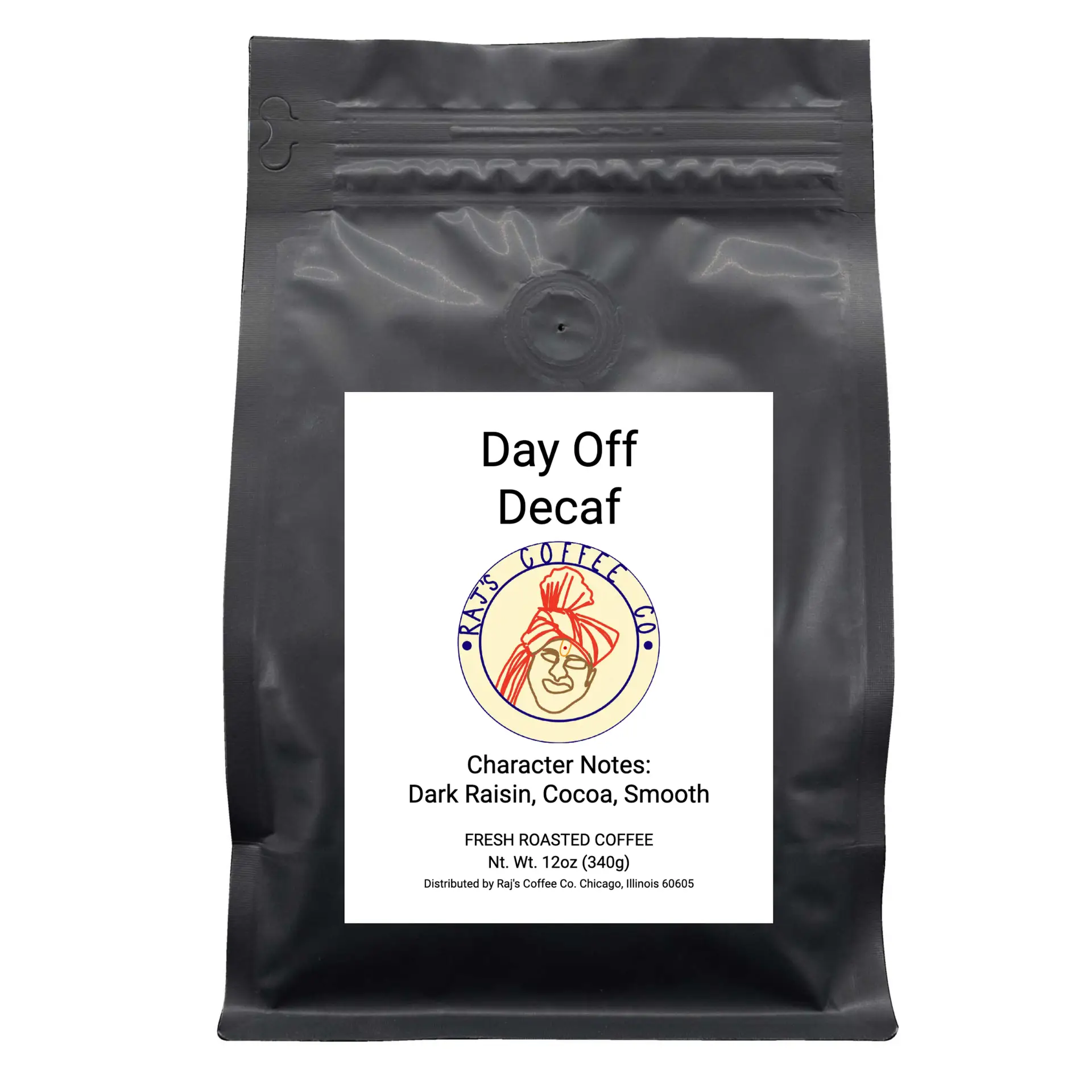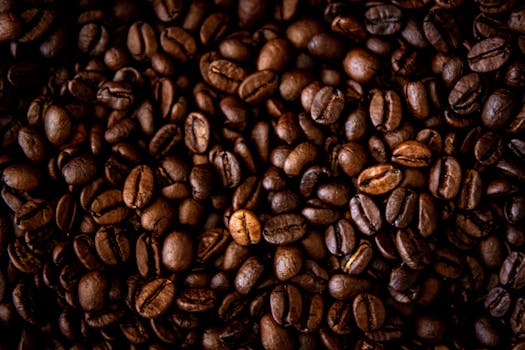“Death Before Decaf” = you’ve probably come across this phrase. Maybe you feel this strongly about coffee that’s been stripped of its caffeine content. After all, high caffeine content is the primary reason a lot of people drink coffee to begin with. We’ve all felt before that sensation of coffee waking us up, getting us ready to start our day. Maybe you’ve also felt coffee keeping you up later than you really need, maybe even making you anxious or fidgety.
Decaffeinated coffee is a solution to the problem of extreme alertness that can come from regular coffee. It also opens the world of coffee up to people with sensitivities to caffeine. People who’ve been advised to lower their caffeine intake for health reasons also have a solution in decaf. But decaf still has a negative reputation for a lot of coffee drinkers. Why would you drink decaf when you can have the wonderful taste of coffee and the seemingly magical effects of caffeine?
In this article, we’re going to cover how coffee is decaffeinated, what to know about brewing and storing decaf, and hopefully convince you that drinking decaf coffee is a really good idea.
Is Decaf Truly Decaf?
The first big disclaimer we like to throw up when talking about decaf is that no coffee is 100% caffeine free. Decaffeinated coffee still contains some caffeine. It’s just a small fraction of the amount that normally is stored in coffee beans. For perspective, a 6-ounce cup of decaf coffee will still have typically 3 – 6 mg of caffeine in it. Compare this to the 75 – 130 mg of caffeine in a regular cup of the same size. So while it’s true that decaffeination can’t rid coffee beans of absolutely all of their caffeine, the process comes very close.
So how are coffee beans decaffeinated to begin with?
Method #1: Organic Solvent
The oldest method of decaffeination is with the use of an organic solvent. In this process, a batch of coffee beans is either steamed and then rinsed with the organic solvent of choice. These days, the chemical most commonly used is ethyl acetate, which is produced by sugarcane. The solvent extracts caffeine from the beans, leaving the flavor compounds in the beans untouched. This process is repeated several more times until the threshold of decaf is reached (97-99.9% caffeine removed).
In addition to this direct method of rinsing the coffee beans in a solvent, there is an indirect method. This involves soaking beans in hot water, treating the water with solvents, extracting the caffeine from the water, then reintroducing the beans to the water solution. The water then extracts the caffeine from the beans, again leaving flavor untouched.
While the organic solvent method is still widely used, and safer than it was decades ago, many folks prefer their decaf to be made without the use of any chemicals. This is a big reason why the second method was developed.
Method #2: Swiss Water

Another method of decaffeination in wide use today is the Swiss Water process. Unlike the organic solvent method, the Swiss Water process uses no chemicals. Much like the organic solvent process, the beans are first soaked in hot water. They then rest for several hours, allowing the water to extract caffeine from the beans. This coffee-water solution then passes through a carbon filter that holds on to the caffeine molecules.
In order for the beans to still have flavor, this method has a second step, osmosis. The rest of the coffee-water solution is known as “green coffee extract,” or GCE. The flavorless coffee beans are thrown away and new, un-decaffeinated beans are combined with the GCE. The resulting osmosis draws caffeine out of the new beans into the GCE, but not flavor. This batch of beans can then be used for decaf coffee.
Method #3: Super Critical CO2
Finally, there’s the method known as super critical carbon dioxide. In this process, the beans, as in the previous two methods, are soaked in hot water. The soaked beans are put into a separate container to be mixed with compressed CO2. The carbon dioxide extracts caffeine from the beans without extracting any flavor molecules. Once the caffeine is extracted, the carbon dioxide is removed.
Some consider the Super Critical Carbon Dioxide process to be more effective than Swiss Water at leaving flavor molecules untouched. However, the equipment for it is very expensive, so many decaffeination plants stick to one of the other two methods.
How Decaffeination Changes Coffee
The decaffeination process, regardless of method, is that it significantly changes the chemistry of coffee beans. Decaf beans are more porous than their caffeinated counterparts. As such, roasters have to approach decaf beans differently. This may be part of the reason why decaf is disappointing for a lot of coffee drinkers. If a roaster treats decaf the exact same way as every other batch, then the complexity of flavor may be lost. A roaster that knows how to approach decaf will keep that flavor.
The two big changes you need to know about for your own brewing are these. First, you may have noticed that decaf beans have an oily shine to them, even when they’re not darkly roasted. This is because of that chemistry change. But it doesn’t necessarily signal the roast level. The second thing is that, due to the beans’ extra-porous nature, decaf stales faster than caffeinated beans. So it’s extra important to get your beans freshly roasted to get the peak of their flavor. Additionally, knowing how to effectively store and rest your beans goes a long way.
Why Good Decaf is Worth It
Good decaf coffee is worth finding for the simple reason that it offers a very similar, though perhaps not identical, flavor experience while leaving out the troublesome ingredient of caffeine. Having too much caffeine can be damaging to your health, not least to your sleep patterns. (The relationship between coffee and your health is something we actually covered here on this blog).
At Raj’s Coffee, we actually have our own Day Off Decaf blend, because we believe good coffee is possible even without caffeine. Consider picking some up! Of course, there are loads of options out there for decaf beans, and we do recommend seeing what other people say about those options, just to make sure you’re getting well-processed, well-roasted decaf.
Drinking decaf, especially, after a certain point in the day, can be a true delight. You do not have to sacrifice your sleep patterns for good coffee throughout your day. If you’ve been skeptical, we hope that we have helped you reconsider the benefits of decaf.


